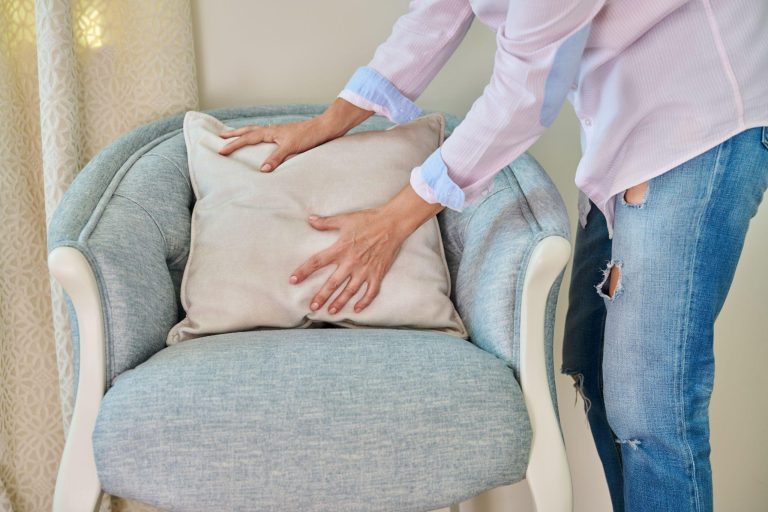Cushion covers are a great way to add some color, texture, and comfort to your home decor. However, most cushion covers are made from synthetic materials that are harmful to the environment and are not sustainable. In this article, we will explore the reasons why you should switch to sustainable and eco-friendly cushion covers and the benefits that come with making this switch.
The Environmental Impact of Synthetic Cushion Covers
Synthetic cushion covers are made from polyester, nylon, or other petroleum-based materials that are not biodegradable and take hundreds of years to decompose. The production of synthetic materials requires a significant amount of energy and releases toxic chemicals into the environment. Additionally, the production and disposal of synthetic cushion covers contribute to water pollution, air pollution, and the release of greenhouse gases.
The Benefits of Sustainable and Eco-Friendly Cushion Covers
Reduces Environmental Footprint
Sustainable and eco-friendly cushion covers are made from natural and renewable materials such as organic cotton, hemp, linen, and bamboo. These materials are biodegradable and decompose much faster than synthetic materials, reducing their environmental footprint. The production of sustainable cushion covers requires less energy and fewer resources, and it does not release harmful chemicals into the environment.
Promotes Sustainability
By choosing sustainable cushion covers, you are supporting a more sustainable and environmentally conscious production process. The use of natural materials helps to conserve resources and reduce waste, and it supports the growth and use of environmentally friendly products.
Enhances Comfort and Health
Sustainable cushion covers made from natural materials are soft, breathable, and comfortable. They do not contain harmful chemicals that can irritate your skin or cause allergic reactions. Additionally, sustainable cushion covers are naturally hypoallergenic and help to promote a healthy indoor environment.
Improves the Appearance of Your Home
Sustainable cushion covers come in a variety of colors, patterns, and textures, making it easy to find the perfect style to match your decor. They are designed to last longer than synthetic cushion covers, and they retain their shape and color even after multiple washes. This makes them a great investment for your home and a beautiful addition to any room.
How to Choose Sustainable and Eco-Friendly Cushion Covers
With so many options available, it can be challenging to know where to start when it comes to choosing sustainable and eco-friendly cushion covers. Here are some things to consider when making your choice:
Materials
When choosing sustainable cushion covers, look for those made from natural materials such as organic cotton, hemp, linen, and bamboo. These materials are biodegradable, renewable, and have a smaller environmental footprint than synthetic materials. Additionally, they are soft, comfortable, and hypoallergenic, making them a great choice for your home.
Certification
When it comes to choosing sustainable cushion covers, look for products that are certified by organizations such as Global Organic Textile Standard (GOTS), Oeko-Tex, and Rainforest Alliance. These certifications indicate that the product has been made using environmentally friendly and sustainable practices, and that the materials used are of high quality.
Transparency
Choose cushion covers from companies that are transparent about their production process and materials used. Look for companies that are open about their supply chain and have a commitment to sustainability. This will help ensure that you are making an informed decision and supporting a company that values the environment.
Style
Sustainable cushion covers come in a variety of colors, patterns, and textures, making it easy to find the perfect style to match your decor. Consider your personal style and the look you are trying to achieve when making your choice.
The Importance of Making the Switch to Sustainable and Eco-Friendly Cushion Covers
The impact of our daily choices on the environment cannot be overstated. Every item we purchase, every product we use, and every material we choose has an impact on the environment. Choosing sustainable and eco-friendly cushion covers is a small but important step in reducing our environmental footprint and supporting a more sustainable future.
By making the switch to sustainable cushion covers, you are supporting a production process that values the environment and reduces waste. You are also promoting a healthy indoor environment, free from harmful chemicals, and contributing to a more sustainable future for ourselves and future generations.
Transform your living space with the stylish and vibrant cushion covers from Hendeer! With a wide range of colors and patterns to choose from, you’re sure to find the perfect match for your decor. Made from premium materials, our cushion covers are soft, durable and easy to clean.
In addition to the environmental benefits, choosing sustainable cushion covers is also a smart investment. These covers are designed to last longer and retain their shape and color even after multiple washes. This means that you will not have to replace them as often as you would with synthetic covers, saving you time and money in the long run.
In conclusion, choosing sustainable and eco-friendly cushion covers is a simple and effective way to enhance your home and make a positive impact on the environment. Whether you are looking to update your home decor, support a more sustainable future, or simply make a difference, making the switch to sustainable cushion covers is a step in the right direction.

